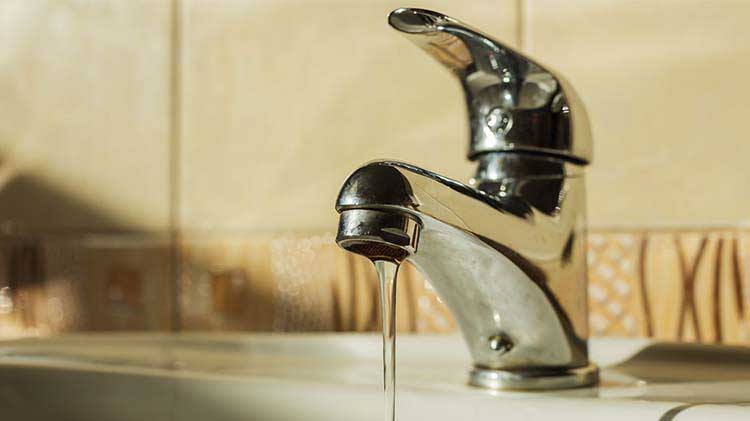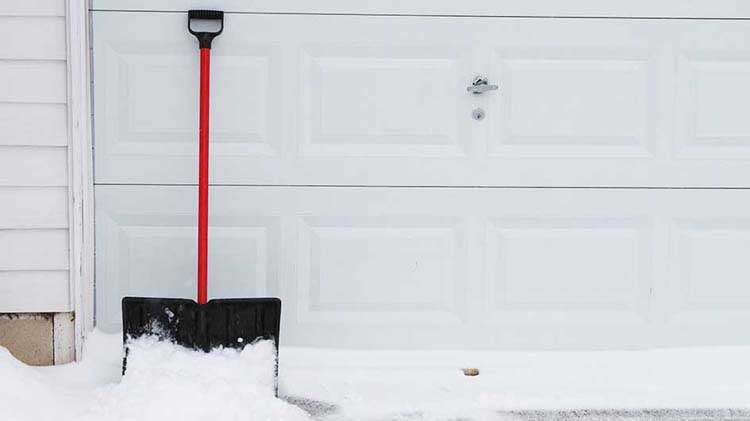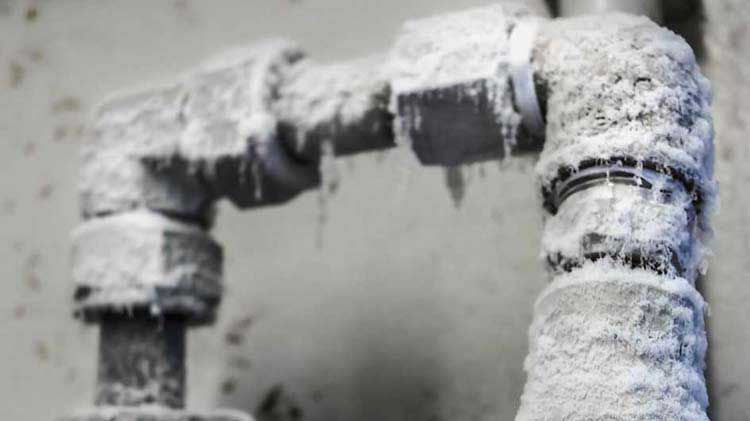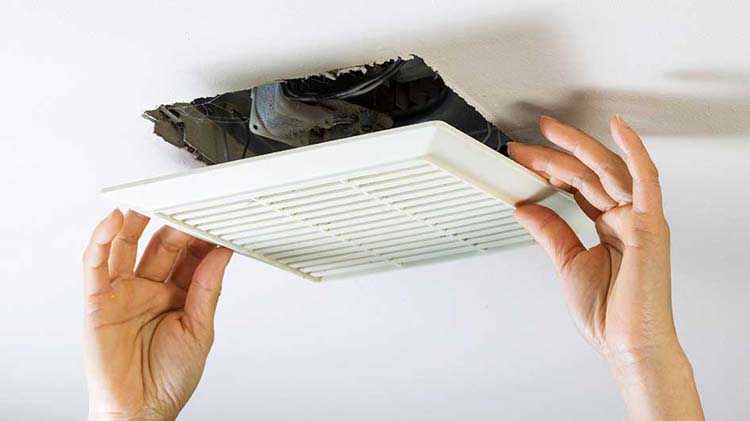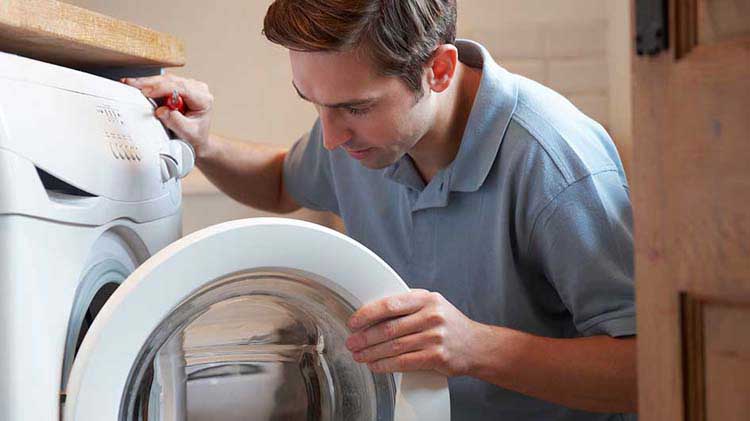Ways to help limit wasted water
A dripping faucet or a pipe with a slow leak may seem harmless, but even small amounts of wasted water can quickly become expensive problems. Save yourself money and headaches by learning how to stop water leaks, and possible damage, before they start.
According to the Environmental Protection Agency (EPA), leaks account for a household's estimated 10,000 gallons of water wasted yearly. And a small leak left unchecked can turn into a pool that causes serious problems. Excess moisture can destroy furniture, carpeting, walls and more.
In a 2020 report, the Insurance Information Institute reported that from 2013 to 2017 the average water damage and freezing claim was $10,234. In 2017, water and freezing losses were about 19% of homeowner's loss claims. The price tag can skyrocket when the home also experiences structural damage. Undetected water can also pose a health risk by encouraging the growth of mold, mildew and bacteria. Hiding behind walls, it can worsen allergies or asthma and cause respiratory problems in healthy family members.
Luckily, it's easy to correct most common sources of water seepage. The EPA recommends quickly replacing a worn toilet flapper or fixing a dripping faucet as you can save you about 10% on your water bill and could help prevent more serious problems.
How to save water and help make sure your home is ship-shape
Evaluate pipework
Indoor plumbing is one of civilization's great innovations, but it's not flawless. The pipes that deliver water are common sources of leaks. The risk increases with age because pipework joints can degrade with time. Common causes of leaky pipes are:
- Rust or corrosion of galvanized steel pipes or of the metal joints and connections of newer PVC or copper piping.
- Too much water pressure; fixtures and appliance hoses can withstand only so much before faltering.
- Cracked or broken pipes and hoses, which can happen with age, pressure or freezing.
To avoid these problems, replace galvanized pipes with plastic if possible, and hire a plumber every few years to inspect your pipes for rust. If your home has a water-pressure regulator, adjust it or hire a plumber to address pressure problems. Finally, insulate exposed pipes and those in the attic, crawlspace or basement. Once a pipe springs a leak, it's best to have a professional repair it. One telltale sign of a leak is decreased or inconsistent water pressure. If you notice such problems with your faucets, call a plumber.
Play detective
When you picture water damage, you may imagine a flooded basement or a waterfall pouring from a toilet. But most problems don't start with giant splashes; a slow leak that goes unnoticed is more common. Early intervention is key. Waiting too long inflates your utility bill and allows water to build to a destructive point that can result in costly restoration expenses. How do you know if your home hides water leaks?
- Check your water bill: Review usage amounts during the coldest months. A household of four using more than 12,000 gallons per month probably has some serious leaks.
- Call your water company: Ask whether your utility provider has a leak detection program that alerts homeowners of unusually high water usage. If so, find out how the system works, so you can take appropriate action.
- Conduct a meter check: Record your water meter reading; then turn off all water inside and outside your home, and make sure no one uses anything that requires water for two hours. Record the reading again; if it's up, it's likely there's a leak. These procedures can help identify the presence of leaks, but they don't tell you their locations. That requires further investigation, starting with examining the most common culprits: pipes, appliances, toilets, faucets and the home's exterior.
Be on alert
As Ben Franklin said, "An ounce of prevention is worth a pound of cure." Help protect your home from water damage by using water leak alarms in several strategic locations.
These sensors can detect water in hard-to-see areas; an alarm sounds for little as one-sixteenth of an inch of water. Basic battery-operated detectors typically cost $5 to $10. Other models, for about $35, connect to smart-home systems such as Wink and SmartThings. Use the alarms under or near toilets, sinks, refrigerators with icemakers, dishwashers, washing machines, water heaters, sump pump pits, whole-house humidifiers, window air-conditioning units and any areas that leaked previously.
Evaluate all machines
Many appliances and mechanical systems use a lot of water. When they have problems, they can leak and cause costly damage. Routine maintenance can help!
- Dishwasher: If a hose leaks or bursts, it can quickly flood your kitchen with gallons of water. The problem is most common with rubber hoses; $20 replaces these with sturdier, steel-braided options.
- Washing machine: Half of leaks result from burst water supply lines, which can loosen with vibration and degrade over time. Check your hoses frequently for cracks and kinks, and replace them every three to five years as part of a proactive maintenance program.
- Water heater: According to Bob Vila, tank-type water heaters last an average of eight to 12 years. Tankless water heaters can last up to 20 years. Angie's list suggests flushing the tank annually. Check periodically for corrosion, leaks and a bulging tank. Have a professional check the anode rods for rust every two years.
- Whole-house humidifier: If the refill valve in a humidifier fails, water can leak directly into your sewer. Inspect the equipment frequently during the heating season, and turn off its water supply when not in use.
Evaluate toilets
Considering how often we use them, it's not surprising that toilets are common sources of leaks. In fact, more than a third of all residential toilets have at least small leaks. Even worse, water damage from toilets average approximately $15,000 in homeowner claims, according to State Farm records.
Finding most toilet leaks is easy. Ten minutes after flushing, remove the tank cover. If the water level is at the top of the overflow tube, you have a leak.
Another way to check: Put several drops of food coloring in the tank; if the color appears in the bowl within 10 minutes, there's a leak. If the toilet valve makes a semi-regular or constant hissing or gurgling sound, there's likely a large leak.
Some toilet leaks are easy to fix, while others require skilled professionals. Before hiring help, try replacing the flapper valve. Often a worn or warped rubber flapper with a bad seal is the source of problems. Swapping out this $5 part is so easy, most homeowners can tackle it themselves. If a new flapper valve doesn't stop the leak, call a plumber. The problem could be a broken part, such as the refill valve or a loose gasket or bolt.
Most issues can be fixed at little expense. If the problem is a cracked tank or bowl, however, the only solution is replacing the entire toilet. When replacement is necessary, consider investing in a WaterSense-labeled model. This third-party certification means the toilet uses 20 percent less water than the federal standard.
Evaluate faucets for leaks
The drip-drop of a leaky faucet or showerhead is more than a nuisance. The EPA states that just one drip per second can waste more than 3,000 gallons of water per year. Damage caused by a leaking sink could cost several thousand dollars to repair.
Faucets have many moving parts that can degrade, making leaks commonplace with enough time. There are four basic types of faucets, and each is repaired slightly differently. To stop a slow leak, first replace worn inside fittings (washers, gaskets, O-rings, cartridges and ceramic discs) and make sure they are secured tightly. You can likely find a tutorial online.
It's also a good idea to remove mineral buildup in the aerator once a year by taking it out and soaking it in vinegar. If those steps don't resolve the problem, hire a plumber.
Remember also to inspect faucets in your bathtub or shower, on the water heater, in laundry basins and utility sinks, as well as your home's exterior.
Showerheads also can cause water issues, but fixing a leak is often as simple as using Teflon tape and a wrench to tighten the connection between the pipe stem and the showerhead. Replacing the washer or O-ring inside the showerhead may also do the trick. As with a faucet, it's also wise to remove the showerhead annually and soak it in vinegar.
Leaks that aren't resolved by these tricks may be caused by valves or other parts that a licensed plumber should tackle.
Check out other carbon footprint solutions for your home.
